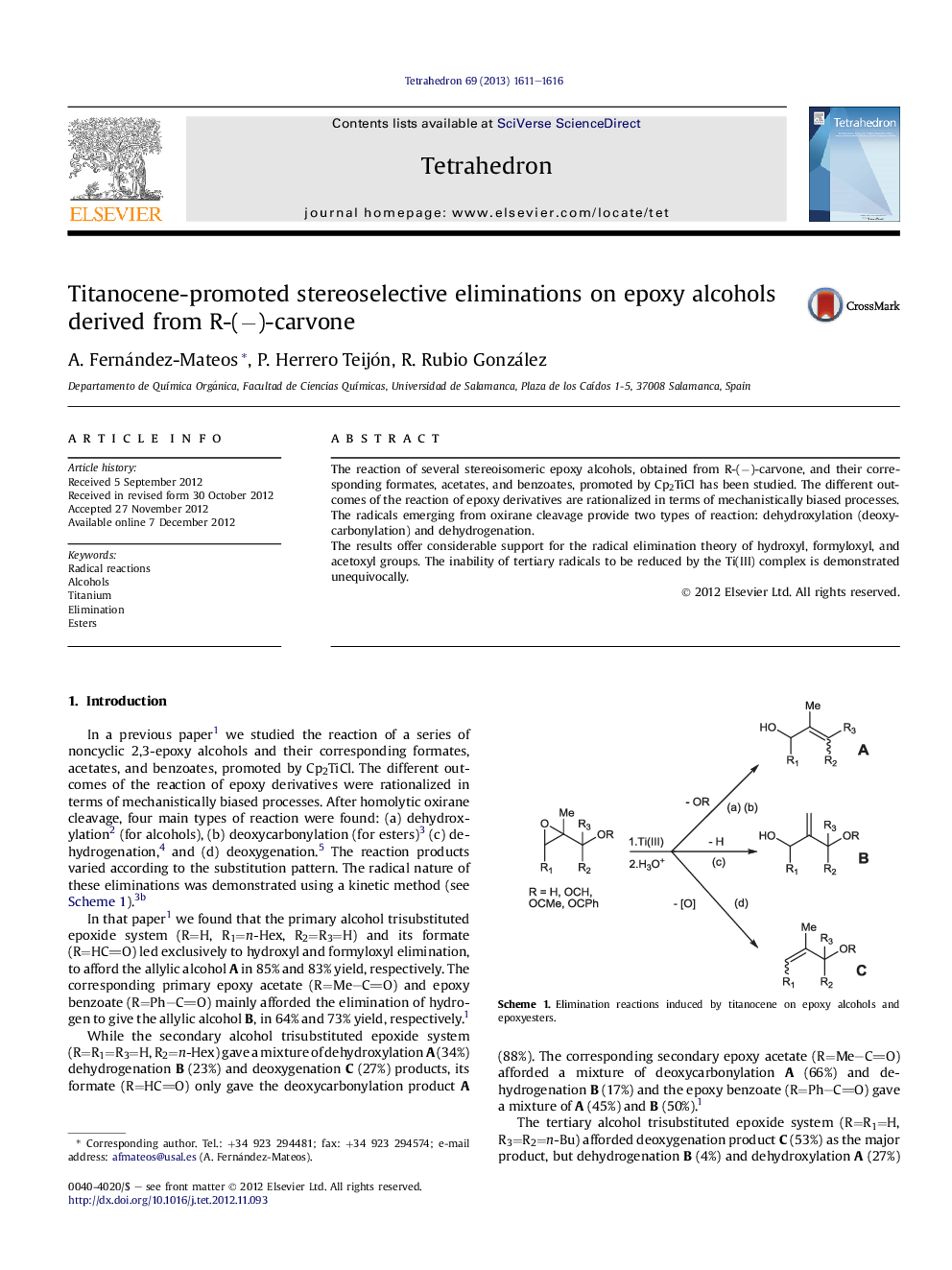| Article ID | Journal | Published Year | Pages | File Type |
|---|---|---|---|---|
| 5219403 | Tetrahedron | 2013 | 6 Pages |
Abstract
The reaction of several stereoisomeric epoxy alcohols, obtained from R-(−)-carvone, and their corresponding formates, acetates, and benzoates, promoted by Cp2TiCl has been studied. The different outcomes of the reaction of epoxy derivatives are rationalized in terms of mechanistically biased processes. The radicals emerging from oxirane cleavage provide two types of reaction: dehydroxylation (deoxycarbonylation) and dehydrogenation.The results offer considerable support for the radical elimination theory of hydroxyl, formyloxyl, and acetoxyl groups. The inability of tertiary radicals to be reduced by the Ti(III) complex is demonstrated unequivocally.
Graphical abstractFigure optionsDownload full-size imageDownload as PowerPoint slide
Related Topics
Physical Sciences and Engineering
Chemistry
Organic Chemistry
